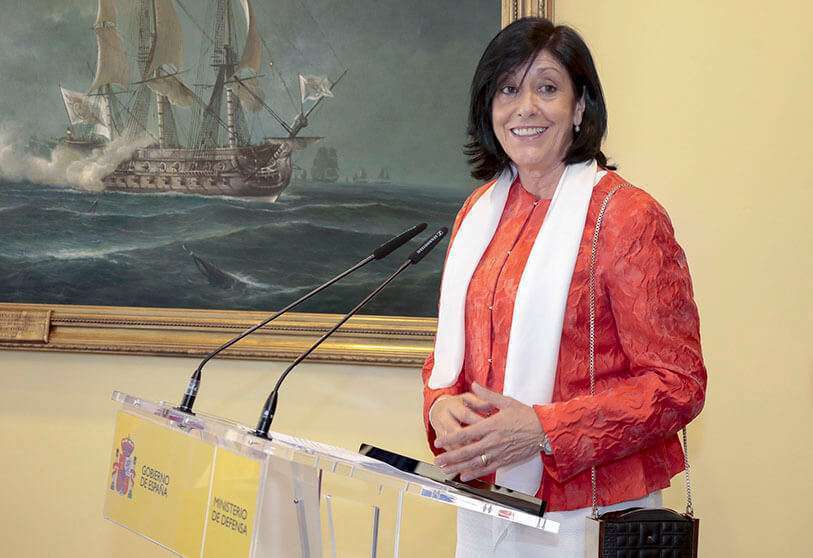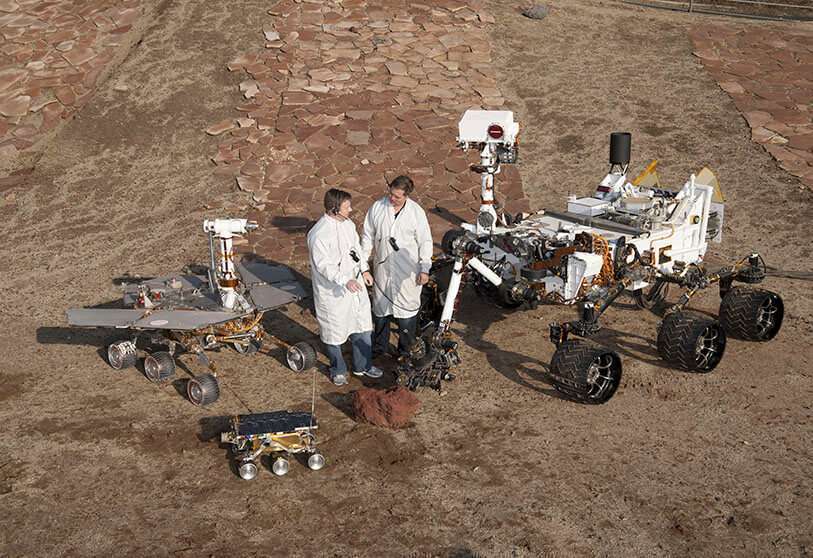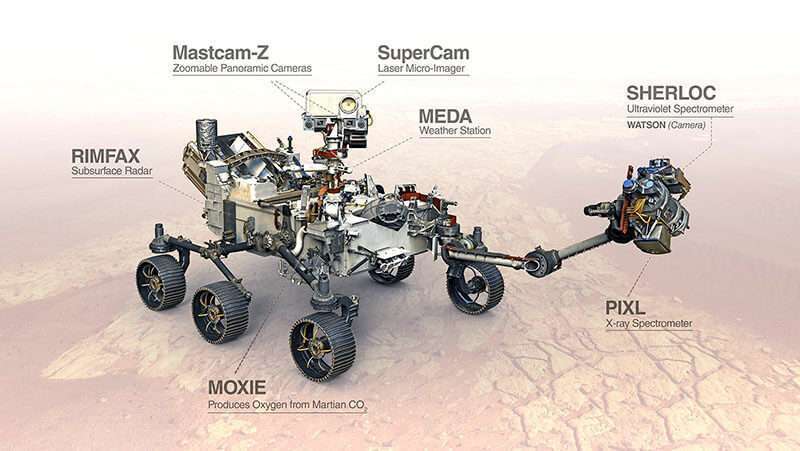Spanish cutting-edge technology travels to Mars for the third time with NASA's Mars 2020 mission

The United States National Aeronautics and Space Administration (NASA) has relied for the third consecutive time on the technology that Spanish scientists, engineers and companies have conceived, developed and manufactured to contribute to the Mars 2020 mission and the off-road vehicle six-wheel Perseverance.
With just one month at the helm of the Secretary of State for Defense, Esperanza Casteleiro has not wanted to miss the important space launch of the Mars 2020 mission, which is scheduled to take off on Thursday, July 30, at 1:50 p.m. Spanish peninsular, from the Kennedy Space Center, near Miami, in the state of Florida. The importance of the interplanetary mission lies in the fact that it intends to find signs of past or present microbial life on Mars, to pave the way for human presence on the surface of the Red Planet.

From the auditorium of the Astrobiology Center (CAB), located on the Torrejón campus of the National Institute of Aerospace Technology (INTA), Esperanza Casteleiro will attend the live broadcast of the launch of the Perseverance all-terrain vehicle, where the important Spanish scientific-technological contribution to NASA's exploratory mission.
Due to the social distancing caused by the COVID-19 pandemic, the number of attendees who will watch the live broadcast from the CAB together with Casteleiro has been reduced to around fifty people on the recommendation of the Labor Prevention Service of the INTA.
Thus, the Secretary of State for Defense will be accompanied by the Director General of Armament and Material, Admiral Santiago Ramón González, the Director General of the Institute, Lieutenant General of the Air José María Salom, the Director of the CAB, Víctor Parro and a group of scientific and technical managers who have made the Spanish contribution possible. It is striking the absence of the Minister of Science and Innovation, Pedro Duque, or the Secretary General for Research, Rafael Rodrigo, somehow represented by Javier Ponce, Director General of the Center for Industrial Technological Development (CDTI), the agency of the aforementioned Ministry .
Esperanza Casteleiro trusts in being able to personally congratulate the United States Ambassador to Spain, Richard Duke Buchan III, who has been expressly invited.

The interest of the Spanish authorities is due to two key contributions. On the one hand, the complete system of the adjustable data transmission and reception antenna, whose correct operation is vital for the success of the mission. Weighing 8 kilos and only about 30 centimeters in diameter, its main purpose is to link directly to Earth and send the scientific data captured by the different scientific instruments, as well as report to NASA technicians on the state health of the vehicle itself, all without using intermediate satellites.
Another of its functions is to receive instructions from the Control Center on the ground to carry out its daily tasks. The main contractor for such an advanced antenna - which must operate in a temperature range between -135ºC and + 90ºC‒, is Airbus Defense and Space Spain and the delicate pointing mechanism of the antenna is the work of SENER. For the person in charge of making it a reality in Madrid, Ana Olea, "each difficulty was satisfactorily resolved and the delivery of the antenna system was completed on time."

It so happens that the first sign of life that Mars 2020 will send to Earth once it is alone in space will be heard by Spanish ears. But not from the Robledo de Chávela (Madrid) Tracking Station, as happened with the Martian probe Al Amal from the Emirates.
This time, due to the rotation of the Earth, if the take-off takes place at 1:50 p.m., the signal will be received by the antennas that NASA has deployed in Canberra (Australia) but that are operated by remote control by the operations technicians of Robledo de Chavela. The contact will take place "around 15:13, Madrid time," sources from the US Space Agency have confirmed to ATALAYAR.
The second key Spanish team is the so-called Martian Environment Dynamics Analyzer or MEDA - an acronym for Mars Environmental Dynamics Analyzer‒, one of the seven scientific instruments aboard the Perseverance ATV. The main researcher at MEDA is Professor José Antonio Rodríguez-Manfredi, head of instrumentation at CAB, a joint body of INTA and the Superior Center for Scientific Research (CSIC).
Weighing 5.5 kilos, it has 11 tiny meteorological and environmental sensors distributed on the vehicle's mast and on the main structure to measure the speed and direction of the wind, the relative humidity of the atmosphere, delimit pressure variations on the Martian surface, know the parameters of infrared solar radiation, the properties of suspended dust, as well as the temperature of the ground and Martian air.
It also incorporates a small camera to take images of the Martian sky and to determine the intensity and profile of dust storms. All this is governed by a Control Unit that will be in charge of planning the data collection and establishing the link with the main computers of the vehicle.
Especially sophisticated are the two sensors to determine the wind speed - one of them deployable, whose delicate structure has been manufactured by the Spanish company AVS. Radiation and dust detectors operating in more than half a dozen spectral bands are also of great importance. Five sensors will measure the air temperature on the Martian surface under any circumstances, three of them installed on the mast and two on the front of the rover
Tirso Velasco and José Moreno have been the director and technical chief of MEDA, respectively, at the Airbus CRISA headquarters in Tres Cantos (Madrid). Each one in his field, have successfully completed the project in its design, manufacturing and testing phases of the control unit and the various on-board sensors and software, as well as quality assurance and integration. Both agree on the difficulty of the measurements "in an environment so hostile and full of electronic equipment in operation"

With funding from the European Space Agency (ESA) and the CDTI, an international consortium has contributed to the development of MEDA. Under the leadership of the CAB, INTA, the Universities of the Basque Country and Alcalá, the Rocasolano Institute of Physical Chemistry, the Finnish Meteorological Institute, the University of Padua (Italy) and several centers in the United States have participated. The foundership
When MEDA descends on the surface of Mars on the scheduled date ‒18 February 2021‒, it will join the other two Spanish meteorological and environmental stations that remain in operation on NASA platforms: REMS (Rover Environmental Monitoring Station) that He descended to the Red Planet on August 6, 2012 aboard the Curiosity ATV. AND TWINS (Temperature and Wind for InSight) installed above the Martian laboratory InSight, which landed on Mars on November 26, 2018.










